Last updated on July 4th, 2024 at 11:41 pm
What are leaders and enders in quilting? If this is a new term for you, we will help take the mystery out as we explain what leaders and enders are and how to use them in quilting.
In a nutshell, leaders and enders are just a little piece of scrap fabric that you feed under the presser foot before and after starting your sewing project. A great way to turn your scrap piece of fabric into something useful.
Post contains affiliate links, and we earn commissions if you shop through the links on this page. For more information, please read the disclosure section under the About Us page.
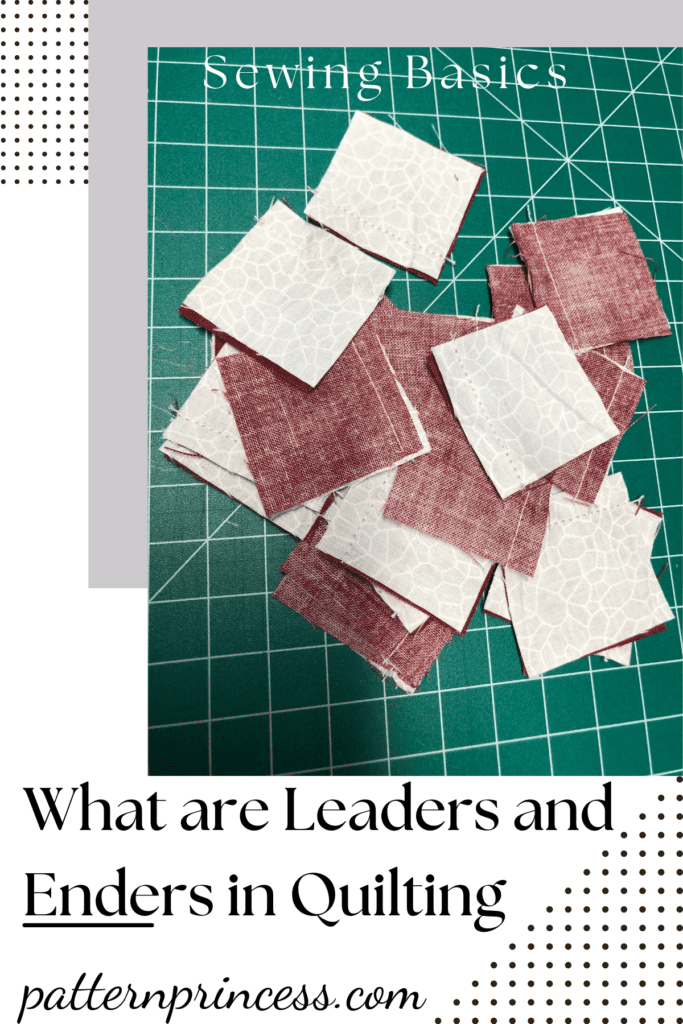
Use Less Thread
Less wasted thread. Normally, I must pull the thread out to remove the piece I was sewing and cut off the thread. Then when starting the next sewing pieces, I had to pull the thread out and hold it again.
I have an older machine that requires me to hold the thread tails to start sewing. This may not be as much of a problem with newer machines. However, older machines like mine requires thread to be pulled out and held to start sewing the main piece and pulled out again to snip off the thread.
By using the starters and enders, I just add a little square in when I am finished with my piece and keep that in place. Then I just need to snip off the piece I finished sewing rather than pull out a bunch of thread just to snip it off. So, it saves on thread. Plus, I have small squares ready for a new quilt.
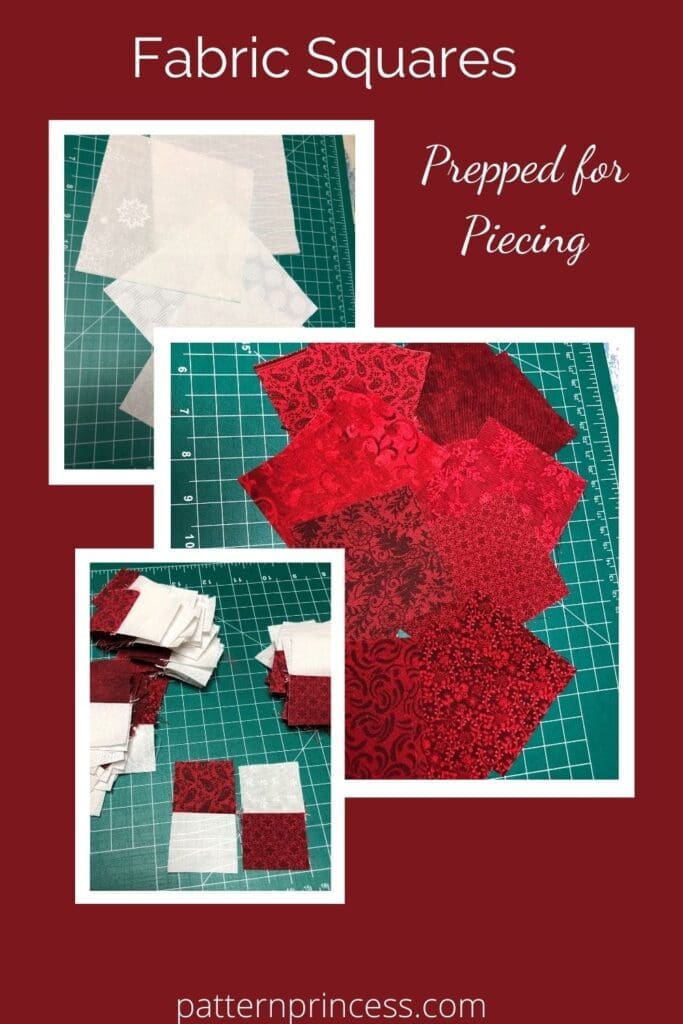
Like Chain Piecing
Using a fabric scrap before and after the piece you are sewing is like chain piecing. In other words, when you either start with the scrap and continue stitching onto your main project sewing piece or finish with your sewing piece and stitch onto your ending scrap.
Leaving the ending scrap under your presser foot will have things ready for your next chain piecing session.

Why Use Leaders and Enders in Quilting?
Leaders and enders achieve a few things.
They help with starting a sewing section that might be harder to start under the foot.
Clean edges on your sewing piece. Less chance of the fabric being drawn down into the needle hole of the throat needle plate.
Helps prevent thread from creating a tangled nest on the underside of your stitching.
You may save thread because there is no need to pull out extra thread to be cut off or start a sewing project.
Great way to use up fabric scraps.
Allows you to sew right to the edge of the fabric.
You can use pieces of scrap fabric for the leaders and enders to make a scrap quilt at the same time.
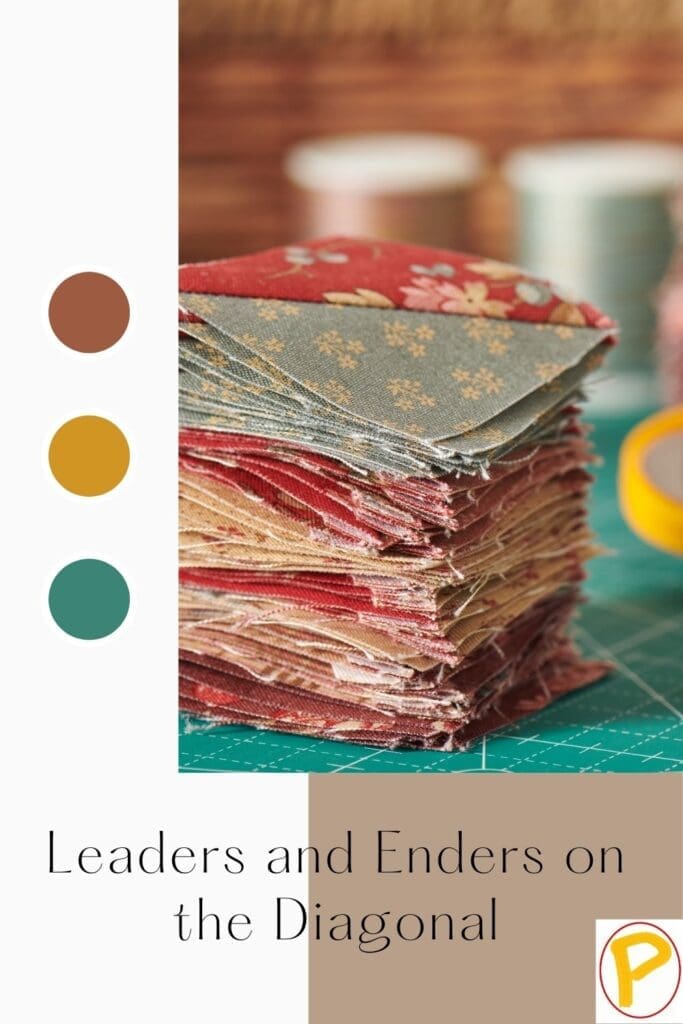
How to Use Leaders and Enders
Start with a leader sent through the machine.
Then using the chain piece technique, send your sewing piece through.
Next, send an ender through the machine.
Finally, snip the thread between the piece you are sewing and the ender leaving the ender under the presser foot. The ender will become the leader for your next sewing session.
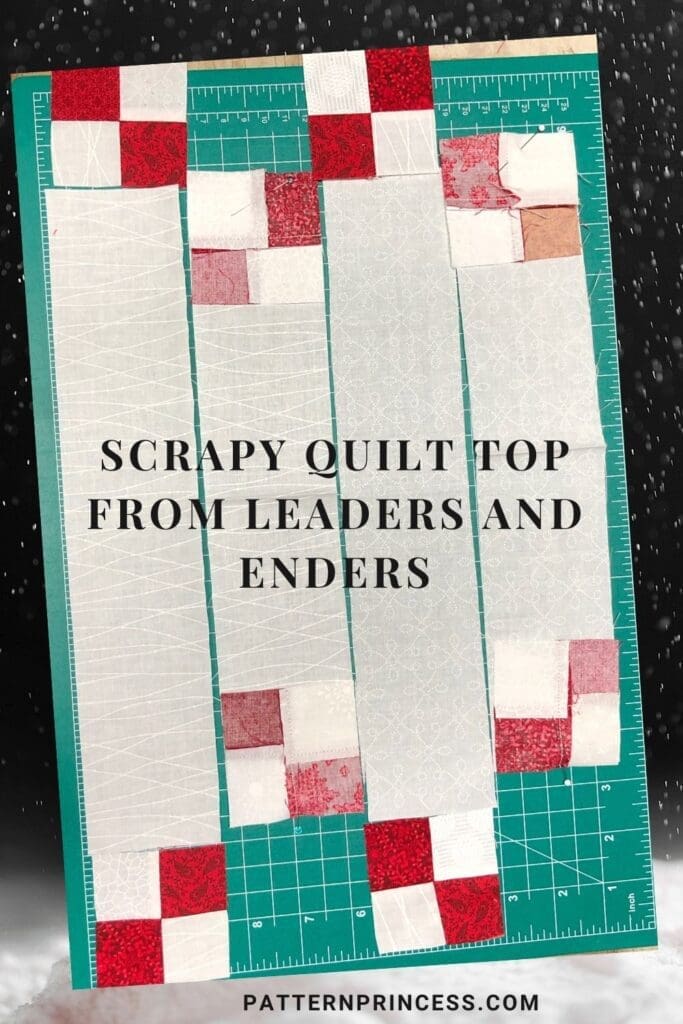
Make a Scrap Quilt with Leaders and Enders
Rather than continuing to use the same scrap fabric for sewing on, cut fabric scraps into usable sizes such as 1 ½ or 2 ½ inch squares.
I keep a little container next to my sewing machine with little squares of fabric cut to size. They are sorted by size and into light and dark piles.
When I need a starter or ender, I pick a dark and a light-colored fabric square and match them right sides together. Then I stitch the normal ¼-inch seam. Sew on the diagonal for half square triangles or sew along the edge and end up with two blocks of a four-patch started.
When you have enough, join them together to make a four patch blocks for a scrap quilt. You could even join the four patch blocks together for a 16-patch block. I have seen some beautiful scrap quilts and you could be making two quilt tops at once using this piecing method.
Here is a good idea. Many quilt patterns use a four-patch and if you pre-plan your next project, you can save time working on your next pattern, while working on your main pattern.
So, dig into your scrap stash and cut little pieces of the same size. Join a light fabric and dark fabric for a pretty contrast.
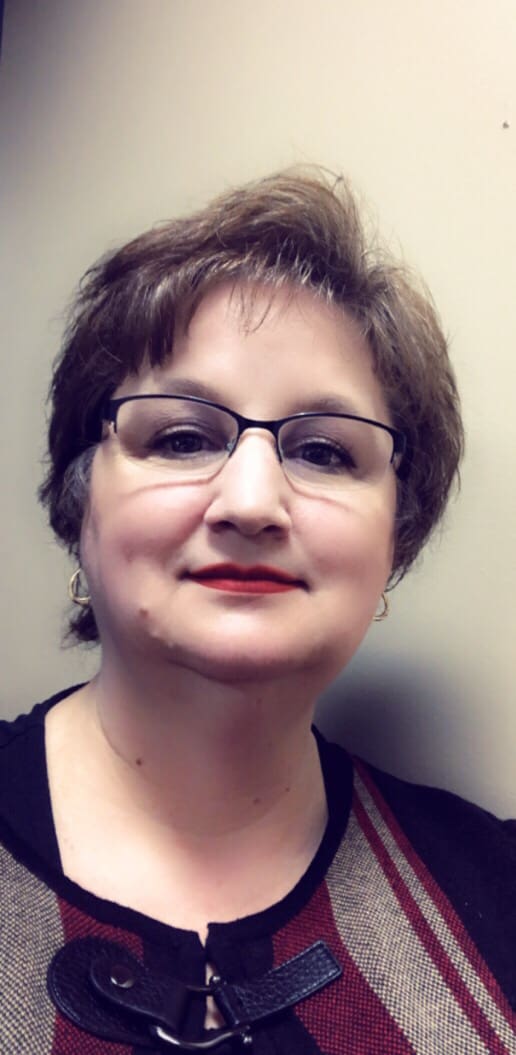
You can find Victoria crocheting, quilting, and creating recipes. She has cooked in restaurants for over 20 years, including many larger parties. She learned to crochet when she was just 11 years old and has been crocheting ever since; over 50 years now. Over 40 years ago, she loved her first class in sewing and continues to hone her skills in quilting. Many have enjoyed the handmade gifts over the years. In her professional career, she has worked in management in a wide variety of businesses including higher education as a dean of a division. All the while attending college part-time to achieve her doctorate in higher education with an emphasis in e-learning.
